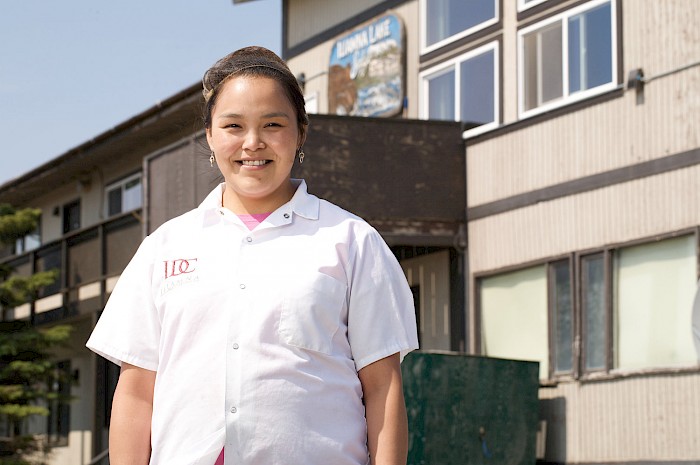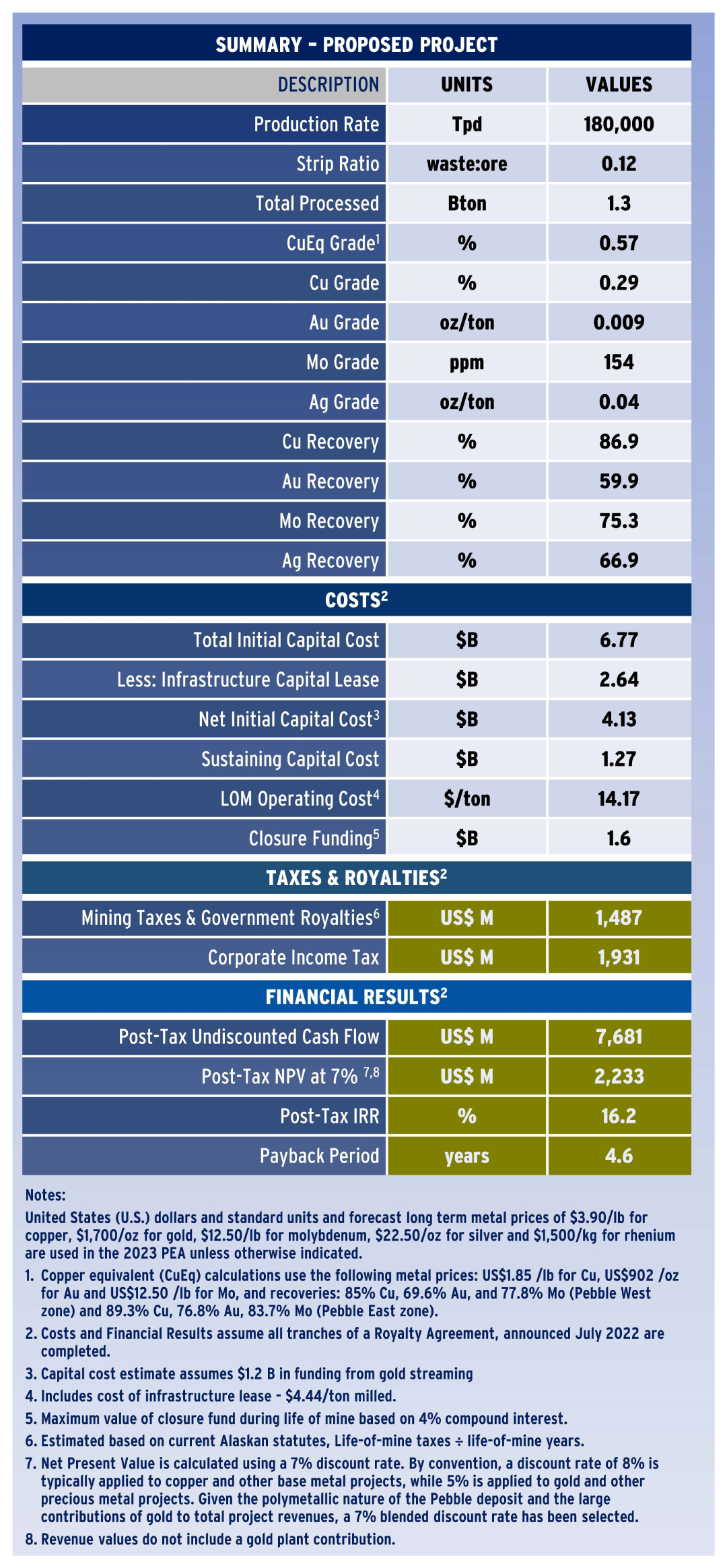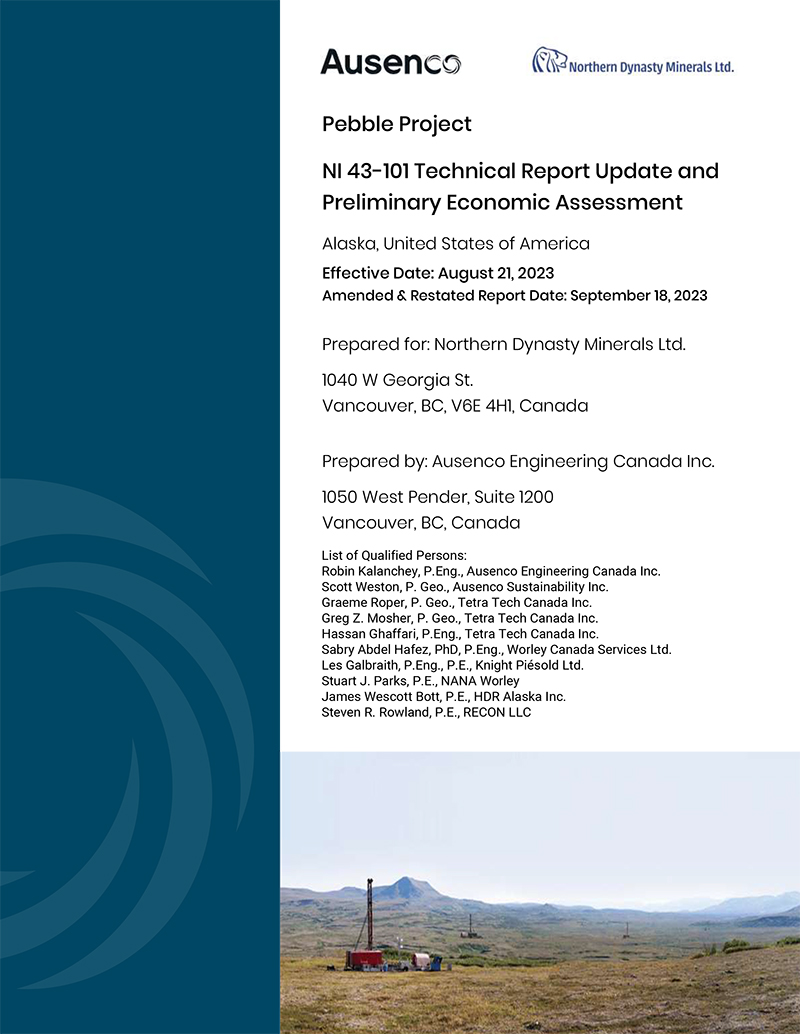Economic Benefits
Pebble Project Forecasts: Positive Economics, Excellent Optionality and Important Benefits
Project Economics
The Independent Preliminary Economic Assessment for the Pebble Project, effective date August 2023, presents cost and price estimates to reflect current economic conditions, an infrastructure plan that uses the “southern route” for project accessi and updates the status of the Environmental Protection Agency Final Determination and U.S. Army Corps of Engineers Record of Decision Appeal processes.
Proposed Project
Production, financial and cost estimates are provided for a proposed 20-year, 180,000 tons per day open pit operation with conventional processing producing three concentrates (copper-gold, molybdenum-rhenium and gravity gold) - the Proposed Project - as described in the permit application and its amendments.
Forecasts include:
- Average annual metal production: 320 million lb copper; 368,000 oz gold; 15 million lb molybdenum; 1.8 million oz silver and 10,000 kg rhenium.
- Life-of-Mine metal production over the proposed 20 years: 6.4 billion lb copper; 7.4 million oz gold; 300 million lb molybdenum; 37 million oz silver; and 200,000 kg rhenium.
Potential Expansion Scenarios
The 2023 PEA also examines potential expansion scenariosii, to test the sensitivity of the project to such expansions and to demonstrate the optionality inherent in the polymetallic Pebble deposit by presenting a possible pathway for future mine development; in addition, it assesses the potential future addition of a secondary recovery gold plant. These sensitivity analyses indicate the project life could be extended for periods of up to a century to extract slightly more than 70% of the mineral resource, with commensurate increases in metal production and improved financial results.
Any future development option beyond the Proposed Project would require extensive federal, state and local permitting processes and approvals before proceeding, which would be in addition to the initial permits and approvals required for the Proposed Project and, very importantly, in consultation with the people and communities of western Alaska, as well as the State agencies.
The 2023 PEA is preliminary in nature and includes inferred mineral resources that are considered too speculative geologically to have the economic considerations applied to them that would enable them to be categorized as mineral reserves. There is no certainty that the 2023 PEA results will be realized.
The development of the Pebble Project will require positive resolution of the denial of a key federal permit by the U.S. Army Corps of Engineers, currently under remand, and overturning of a Final Determination under Section 404(c) of the Clean Water Act by the Environmental Protection Agency, which would block development of the mine. These issues and other project risks are more fully described in the 2023 PEA.
Benefits for Alaska and USA

The economic contributions made by the Pebble Project, if developed, would be extensive in the southwest region and throughout the State of Alaska; and would extend into the rest of the United States.
- Thousands of direct, indirect, and induced jobs would be created.
- New infrastructure in the region could facilitate lower costs for transportation and power.
- The mine would contribute almost $2 billion in taxes in the region, to the State, and federally.
- A significant portion of the taxes to the State would be directed to the Alaska Permanent Fund.
- Further benefits would be provided directly to Alaskans via dividends paid from the Pebble Performance Dividendiii.
- Intention to distribute 3% net profits royalty interest from the Pebble Project to adult residents in the Bristol Bay region who have subscribed.
- Minimum aggregate payment of US$3 million per year while the mine is in operation.
Production from the Pebble Project would be a significant source of COPPER, reducing the U.S. reliance on imports to achieve its green energy goals.
Notes
i The final Pebble EIS analyzes the potential impacts of four action development alternatives, and a "No Action" alternative. In December 2022, the Conservation Fund and Bristol Bay Heritage Land Trust announced the purchase of three conservation easements in an area where an access road from Cook Inlet to the Pebble mineral deposit had been proposed. This ‘northern transportation route’ was identified as the Least Environmental Damaging Proposed Alternative during the EIS process. The ‘southern route’ analyzed in the 2023 PEA is one of the other action alternatives, a route which would utilize a ferry to cross Iliamna Lake then parallel the south shore to a Cook Inlet port site at Amakdedori.
ii The project as originally designed in 2017 and subsequently amended during the EIS NEPA process (the “2020 Project Plan”) would extract slightly more than 10% of the current estimate of the mineral resource. This does not preclude development of additional resources in other phases of the project in the future, although any subsequent phases of development would require extensive regulatory and permitting review by federal, state and local regulatory agencies, including a comprehensive EIS review under NEPA. In response to a Request for Information ("RFI") from the USACE during the NEPA process (and part of the EIS Administrative Record), the Pebble Partnership submitted a conceptual project plan layout and written description that described a case to expand to 250,000 tons per day in Year 21; and further explained the “concept is merely one of several expanded development scenarios that could potentially be proposed and permitted in the future.” The 2023 PEA tests the sensitivity of the project to an expansion by evaluating three potential expansions: the one in the RFI response and two others that would see the project expand to 270,000 tons per day in Year 5 or in Year 10.
iiiThe Pebble Partnership has established the Pebble Performance Dividend LLC ("PPD LLC") with the objective of ensuring that full-time residents of communities in southwest Alaska benefit directly from the future operation of the proposed Pebble Project.



